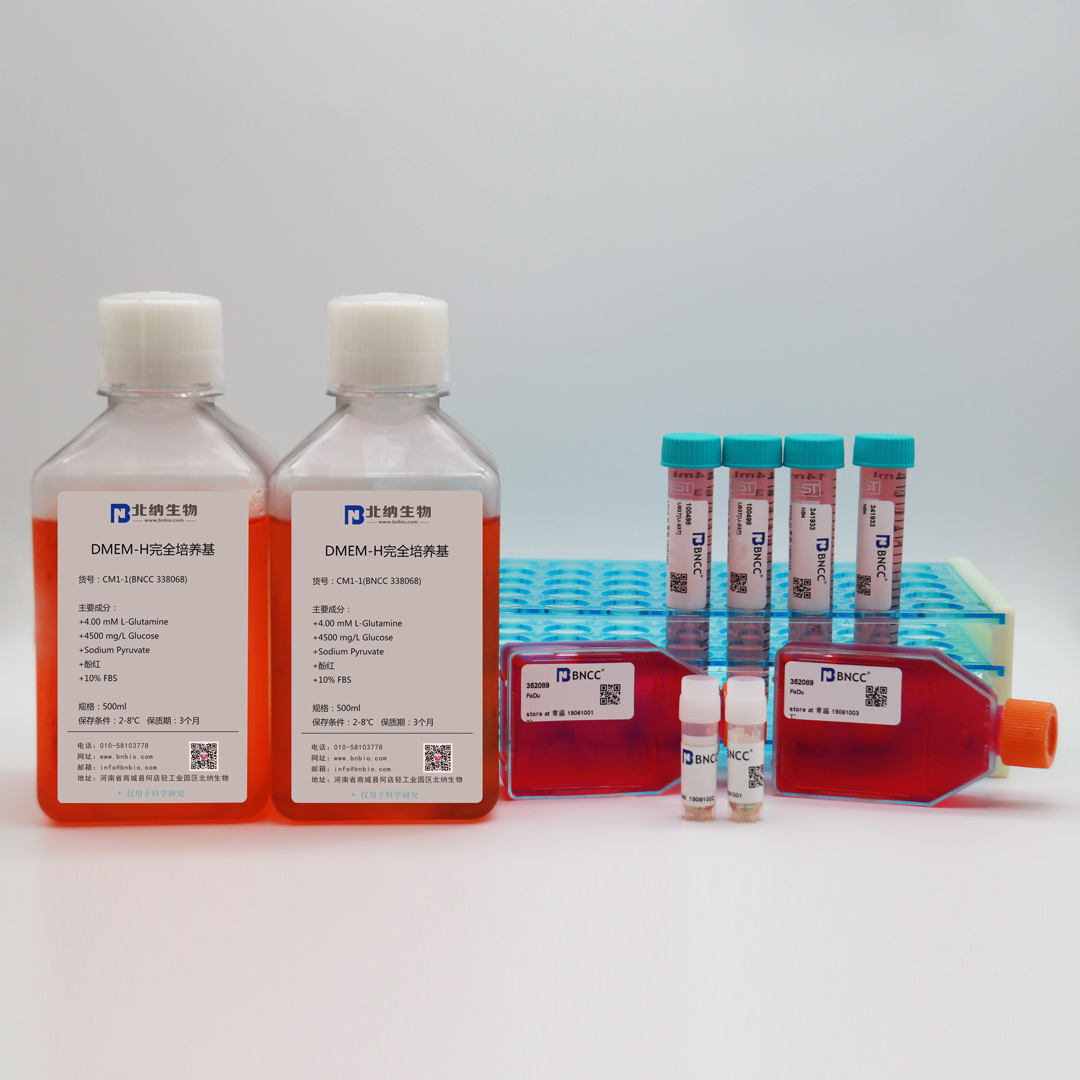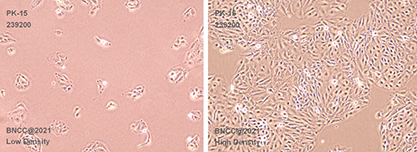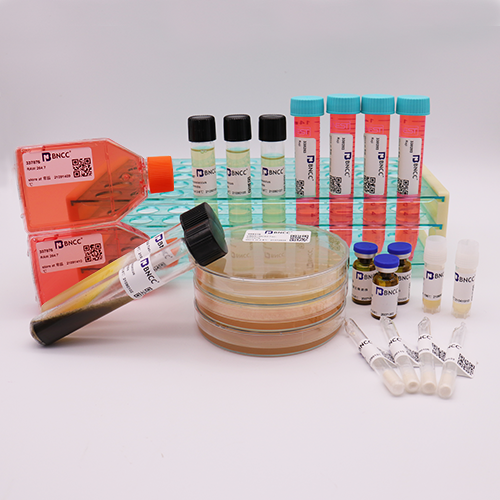PK-15 porcine kidney cells
adherent, epithelial cell-like
No. : 239200
Product format: 2ml frozen vial x 2, or T25 flask x 1
Biosafety level : 1 , handle in ultra-clean table or safety cabinet
Receiving notice: if any abnormality is found on the day of receipt, please contact the customer service within 24 hours. If it is overdue, it is deemed that the cells are well. For the frozen cells, it shall be stored in the refrigerator at -80 ℃ upon arrival. If they are not used for a long time, they shall be transferred to liquid nitrogen for storage overnight. Recovered cells in T25 culture flask, upon receipt, put the culture flask in the incubator for 4h, and then carry out handling procedure. During recovery, each vial shall be used up once and shall not be retained. After recovery, the cells can be passed on to the next generation and can be used normally. Please operate in strict accordance with this instruction, otherwise the replacement of cells are not be available in case of loss of cell viability.
Growth conditions :37 ℃,5% CO2,CM8-1 culture solution. CM8-1 culture solution: 90% EMEM + 10% FBS. EMEM:EMEM culture solution, containing glutamine.
Recovery steps:
(1)prepare a new 100mm culture dish containing 12ml of the above culture medium;
(2)remove the frozen vial from liquid nitrogen or refrigerator at -80℃, thaw the vial in 37°C water bath for 1-2 minutes. Transfer the vial to biosafety?cabinet for culture as soon as the contents are completely thawed.
(3)draw the solution with a sterile pipette, drip into a new culture dish, and mix it evenly by shaking clockwise;
(4) Put it into incubator (37℃,5%CO2), change the media overnight, and it will grow up in 3-5 days.
Subculture/ cryopreservation: remove old medium, and rinse twice with PBS, add 2ml of 0.25%Trypsin+0.02%EDTA, do not shake the culture dish during the period. Observed under the microscope, remove most of the trypsin(with 0.5ml left) when the cells detach. transfer it to the incubator for digestion about 2minute, and take it out.Passage: terminate digestion with 6ml of CM1-1 culture media, aspirate and dispense into 3~6 culture dishes. Cryopreservation: terminate digestion with 3ml of cryopreservation solution (90%FBS+10%DMSO), aspirate and dispense into 3 frozen vials, and cryopreserve at -80 ℃ with a programmed cooling box.
Recovery record: According to the recovery instructions, the results of the cell recovery are reported as follows:
| item |
quality standard |
recovery record |
| viability: |
adherence is observed in 18 hours, the cell adherence rate ≥ 80.0% in 96hours |
adherence is observed in 18 hours, the cell adherence rate ≥ 80.0% in 90hours |
| cell morphology: |
adherent, epithelial cell-like |
CM8-1 culture medium, adherent, epithelial-like, short spindle |
| attached figure: |
 |
 |
| Conclusion: |
good viability, and no abnormal cell morphology, qualified; |

 info@bncc.com
info@bncc.com
 - English
- English
 - Japanese
- Japanese







